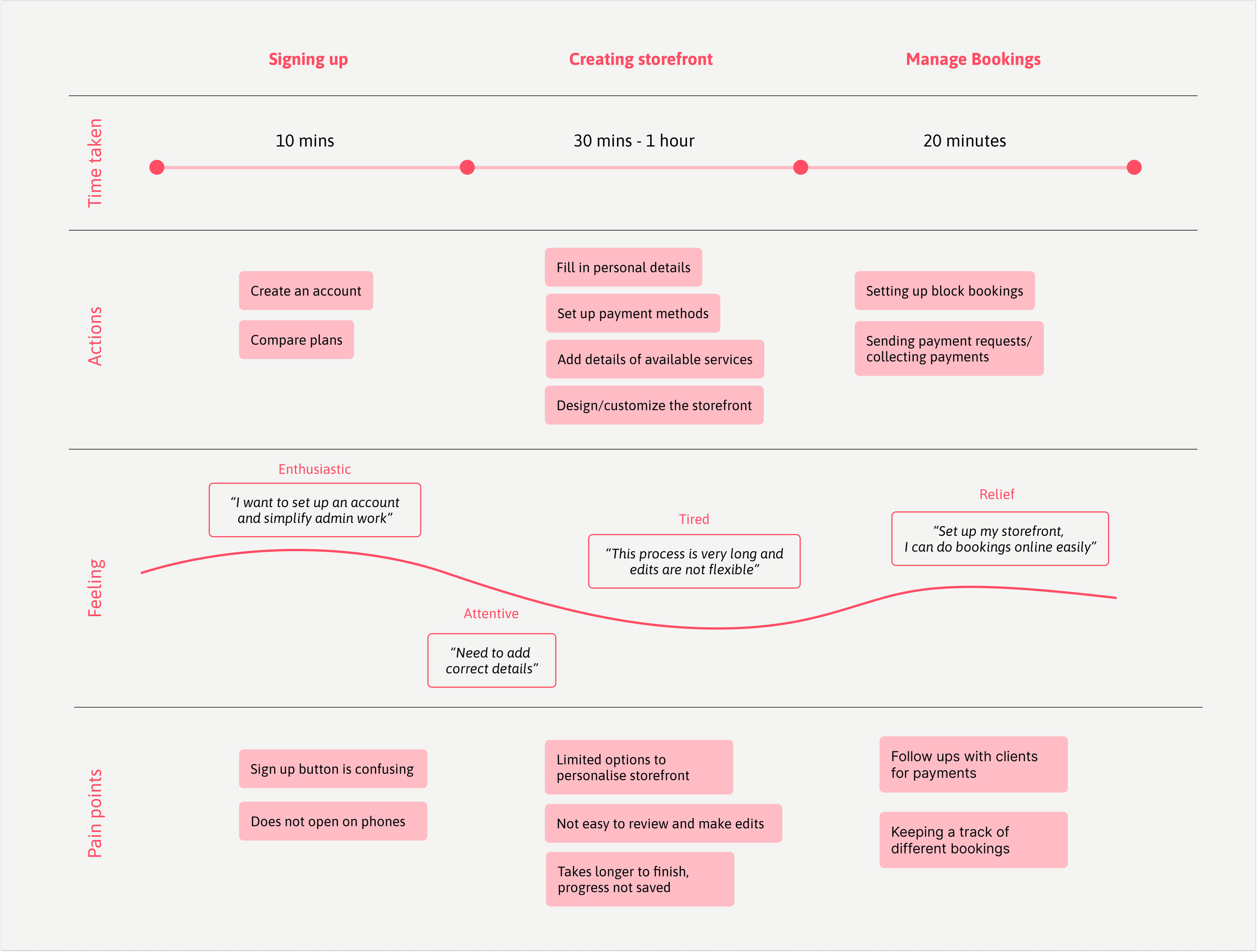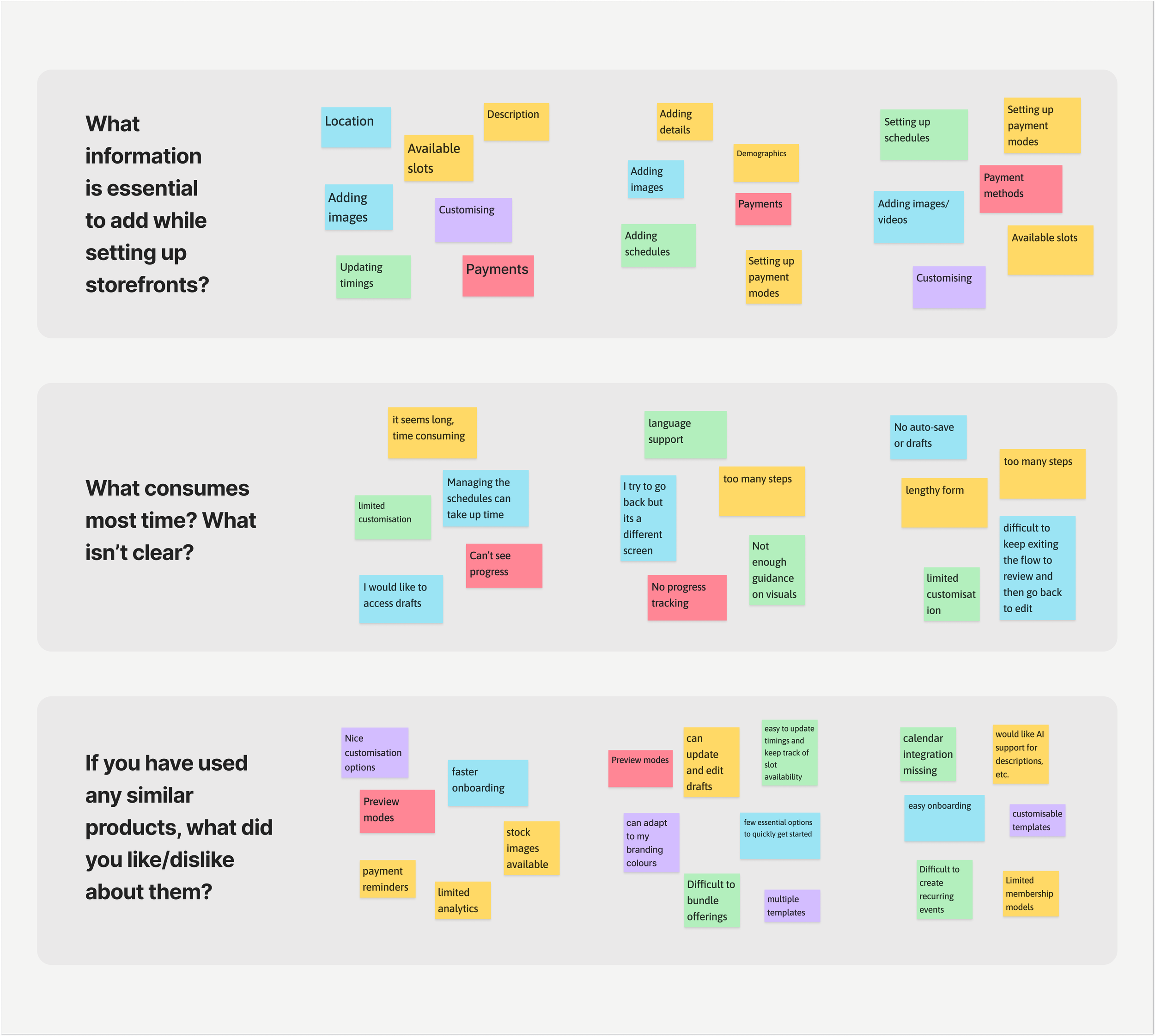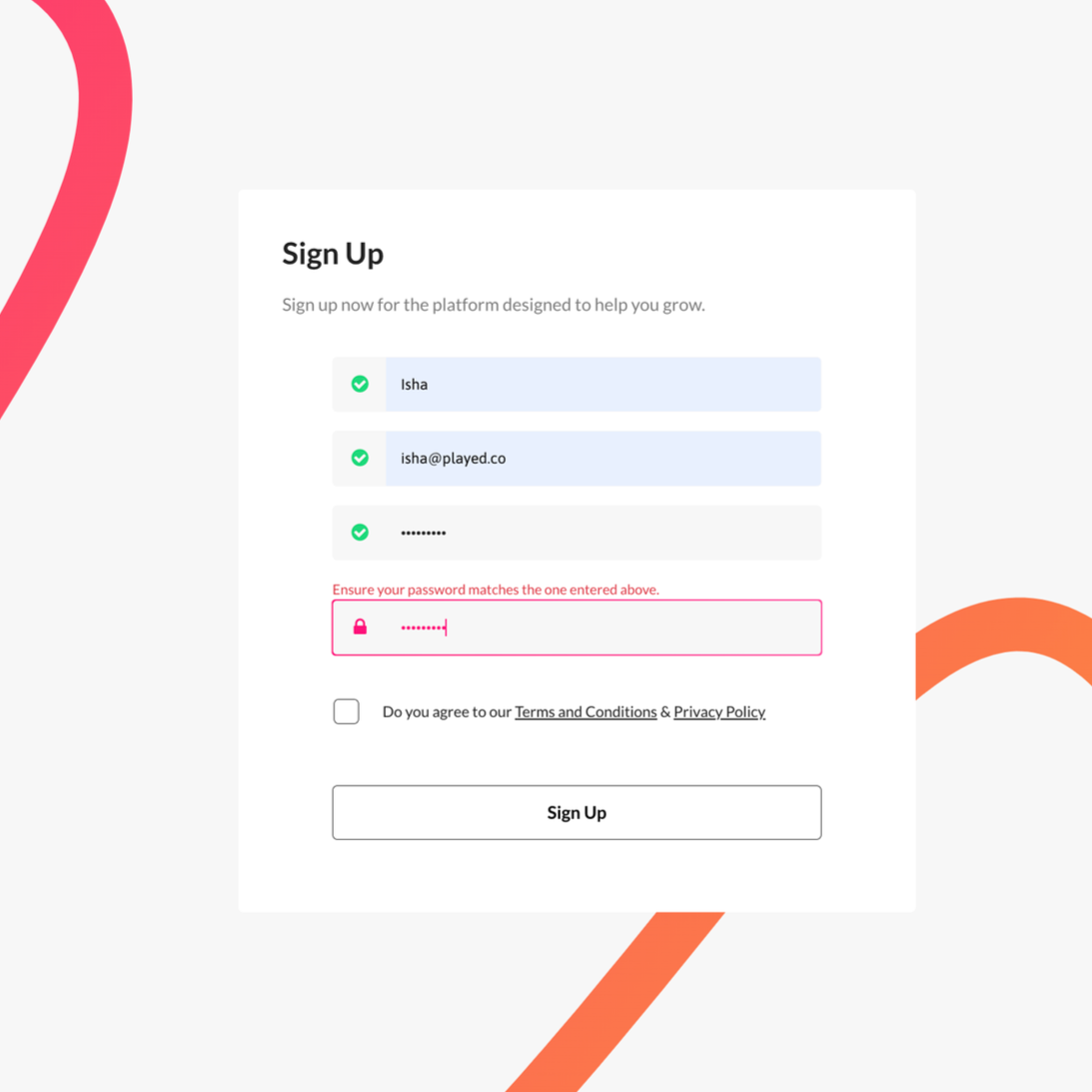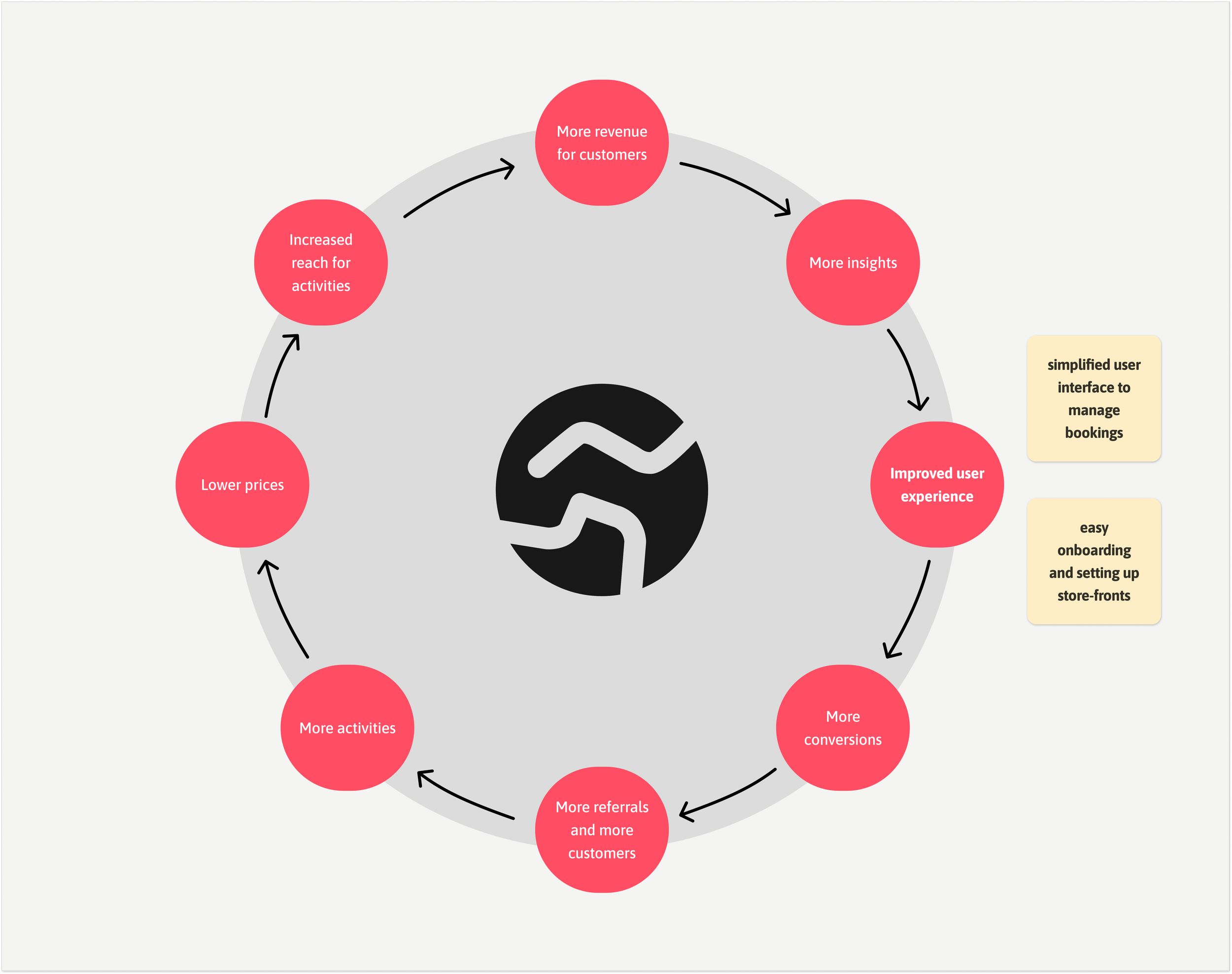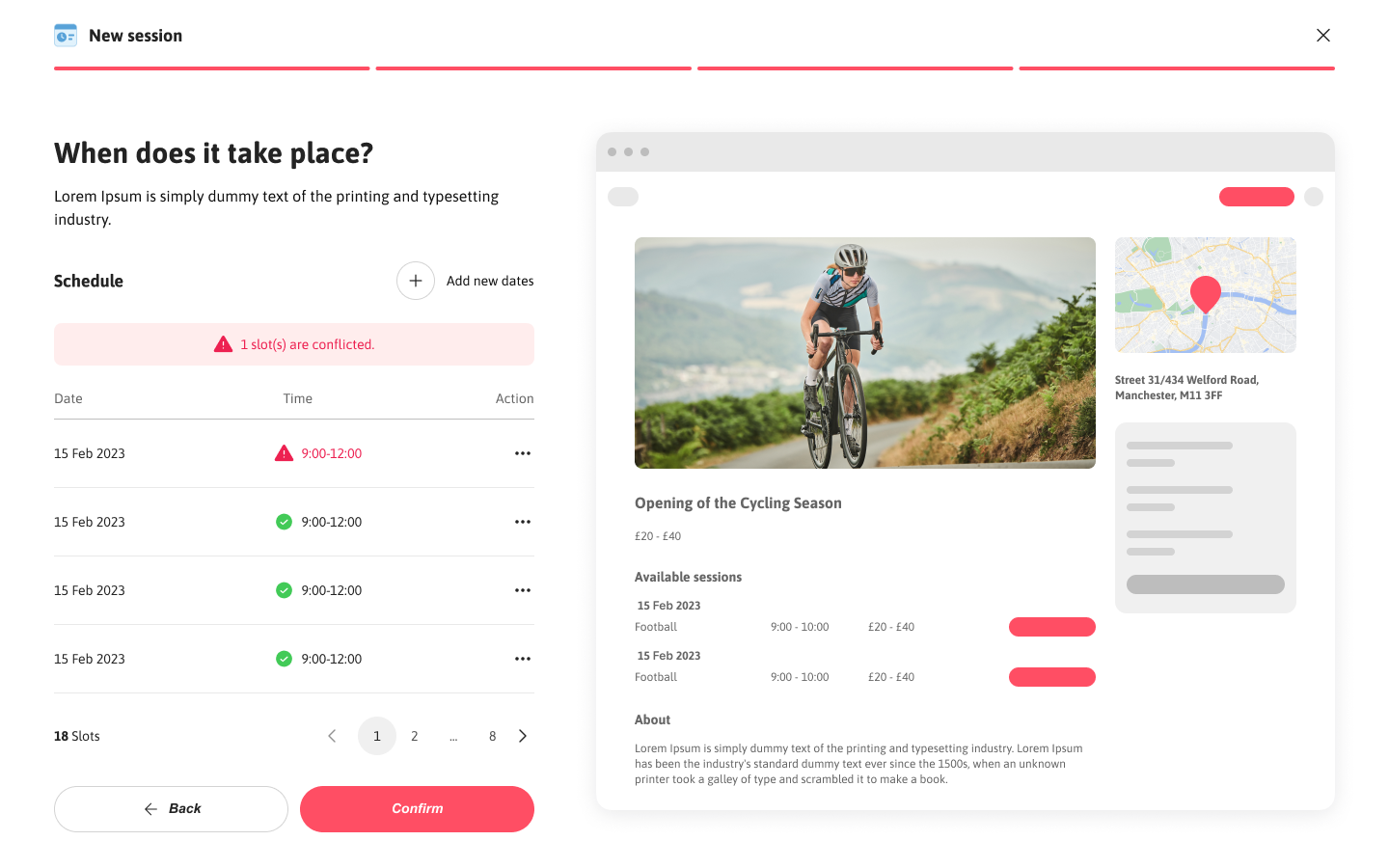UX Improvements That Drive User Action: Optimising Onboarding for Higher Conversions
Role: User Experience Designer
Skills: User research, UX audit, Wireframes, Customer Journey Map, User flows
Timeline: January - March 2023
The problem - Rigid onboarding flow hindered completion
Played is a sports participation platform that helps providers create digital storefronts to host activities, manage bookings, and track performance. However, the existing onboarding experience was fragmented and time-consuming, making storefront setup difficult and reducing user activation. The goal was to redesign the UX/UI to streamline setup, improve clarity, and ultimately drive higher conversions.
Discovery - diving deeper into user pain-points
Conducting interviews with users and journey mapping revealed that the storefront creation phase was the biggest bottleneck in the overall onboarding experience.
From the journey map, users spent 30 mins–1 hour creating storefronts — significantly longer than any other stage.
Emotional mapping showed a clear dip in engagement during this stage: users felt the process was “very long” and “not flexible.”
Pain points like no auto-save, too many steps, and limited customization directly contributed to fatigue and drop-offs.
Uncovering Friction: Barriers to a Smooth Start
After initial user interviews, analytics helped quantify user friction and validate key pain points.
What We Found:
Overwhelming flow – 67% of users struggled with too many unclear steps.
Rigid navigation – Users couldn’t go back without restarting, increasing frustration.
Sign-up errors – 79% of sessions failed due to hidden password inputs.
Together, these findings confirmed that the onboarding flow was the biggest barrier to adoption.
Overwhelming onboarding flow
Rigid navigation
Sign-up errors
Defining our User Needs
From the user research — two core personas emerged: a time-strapped venue manager juggling multiple storefronts, and an efficiency-focused participation lead aiming to boost engagement with limited resources.
Their shared frustrations around time-consuming storefront setup, manual workflows, and limited flexibility highlighted the need for a faster, clearer onboarding experience. These insights directly informed the design objectives — to simplify setup, reduce cognitive load, and enable users to launch and manage storefronts efficiently.
Understanding Business Needs
Meanwhile, the Business Value Flywheel highlighted that improving user experience drives more conversions and referrals — key levers for growth.
By linking both insights:
Streamlining storefront setup emerged as the highest-impact opportunity to strengthen the flywheel — improving UX → boosting conversions → enabling customer growth.
Simplifying the interface and onboarding directly supported the “Improved User Experience → More Conversions → More Referrals” loop.
Thus, the storefront creation experience was prioritized in the design roadmap — positioned as a critical step to enhance user satisfaction and unlock recurring business value.
Competitive Analysis
Analysing direct competitors and indirect (such as booking platforms in other domains), it was revealed that Played lagged behind in flexibility, mobile experience, and storefront customization as compared to the rest. These findings reinforced onboarding and storefront setup as high-impact priorities, directly aligning with business goals of driving faster adoption, improving retention, and supporting the growth flywheel. This alignment guided the design goals toward creating a smoother, more flexible, and conversion-focused experience.
How can we improve?
The research helped us define goals for improving UX/UI of onboarding flow
Streamline onboarding flow — Reduce setup time and cognitive load by simplifying steps and guidance.
Increase flexibility — Allow users to navigate back and edit inputs without restarting the process.
Enhance clarity and feedback — Improve form validation, visibility of inputs, and progress indicators.
Boost completion and adoption — Encourage storefront creation through a smoother, faster, and more intuitive experience.
Improved User Flows
The revised user flow introduced flexibility with clear entry and exit points, allowing users to resume setup where they left off. Smaller milestones maintained motivation and reduced cognitive load, whereas and a review window improved clarity, and enhanced efficiency — ultimately reducing drop-offs.
From Insight to Design: Turning Problems into Possibilities
Research findings were translated into focused design actions that improved clarity, confidence, and motivation:
Clear password visibility to reduce sign-up errors.
Progressive success screens to reward completion in long flows.
Simplified review screens for easy edits and efficiency.
Save-and-resume functionality to help users pick up where they left off.
Together, these updates turned friction into flow — making onboarding faster, friendlier, and more motivating.
Screens and interactions
The design was built using a newly established design system, featuring a refreshed color palette and visual language that strengthened brand identity while supporting key UX improvements.
Users can save and continue journeys as needed, reducing cognitive load.
Users have the flexibility to go back to previous step and make quick edits.
New design system also enabled us make improvements for mobile experience.
Impact and Outcomes
The redesigned onboarding experience delivered measurable improvements in both efficiency and engagement. Through usability testing and analytics tracking, key metrics showed clear progress — conversion rates improved by 12%, with users completing storefront setup faster and with fewer errors.
Task success and satisfaction scores rose notably by 20%, supported by in-app surveys and qualitative interviews that reflected a smoother, more intuitive journey. The combination of streamlined flows, clearer feedback points, and stronger visual consistency proved effective in reducing drop-offs and encouraging adoption.
Overall, the design changes validated the approach — demonstrating how user-centered UX improvements can drive tangible business growth.
